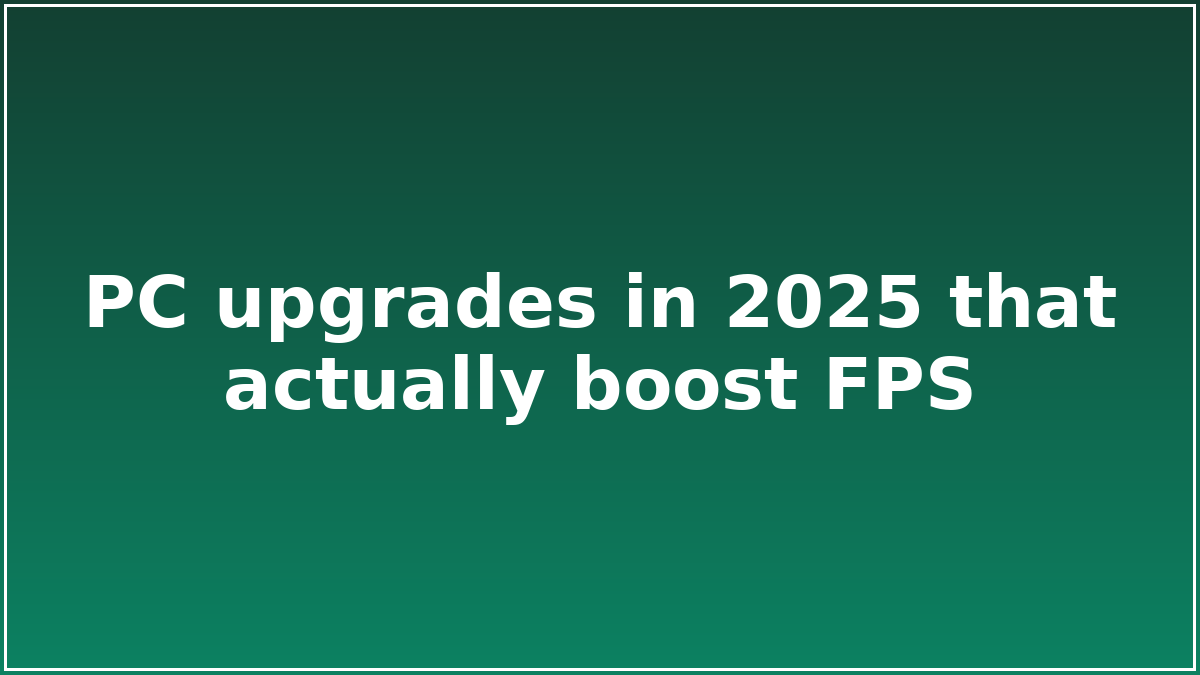PC upgrades in 2025 that actually boost FPS

CPU/GPU/RAM/SSD priorities and bottlenecks.
This guide focuses on upgrades that consistently improve frame‑rate and loading times in modern PC games.
Steps
- Profile your current system: monitor CPU/GPU usage and frame‑time while playing 10 minutes of a demanding scene.
- If GPU is pegged >95% and CPU <70%, a GPU upgrade brings the largest gains. Otherwise, consider CPU/RAM first.
- Move from SATA SSD to NVMe (PCIe 3.0/4.0) for faster loads and shader compilation.
- Increase RAM to 32 GB if you multitask, create content, or play large open‑worlds with heavy texture packs.
- Cap frame‑rate to your display’s VRR range to reduce spikes and fan noise.
Checklist
- Back up saves and profiles
- Update motherboard BIOS
- Clean install GPU drivers
- Re‑enable XMP/EXPO for RAM
Troubleshooting
- If stutter persists, clear shader cache and rebuild
- Match power connectors firmly; avoid split cables for high‑end GPUs
FAQ
Will this void my warranty?
No; follow the vendor’s documented limits and procedures.
How do I measure success?
Use a repeatable 5‑minute test and track frame‑time or load times before/after.
Advanced tips
- Work in a repeatable test scene; change one variable at a time.
- Use frame‑time graphs over average FPS to spot micro‑stutter.
- Save per‑game profiles so updates don’t overwrite your settings.
Common mistakes
- Stacking multiple sharpening passes (can cause shimmer).
- Using unlimited FPS on VRR displays (can raise latency and temps).
- Enabling conflicting options at OS and in‑game level.
Cheatsheet
PC upgrades in 2025 that actually boost FPS — quick wins you can try first:
- Lower volumetrics and shadows before textures.
- Cap FPS 2–3 below refresh for smoother frame‑time.
- Prefer in‑engine upscalers over driver‑level scaling.
Source
Primary documentation and testing relevant to "PC upgrades in 2025 that actually boost FPS".